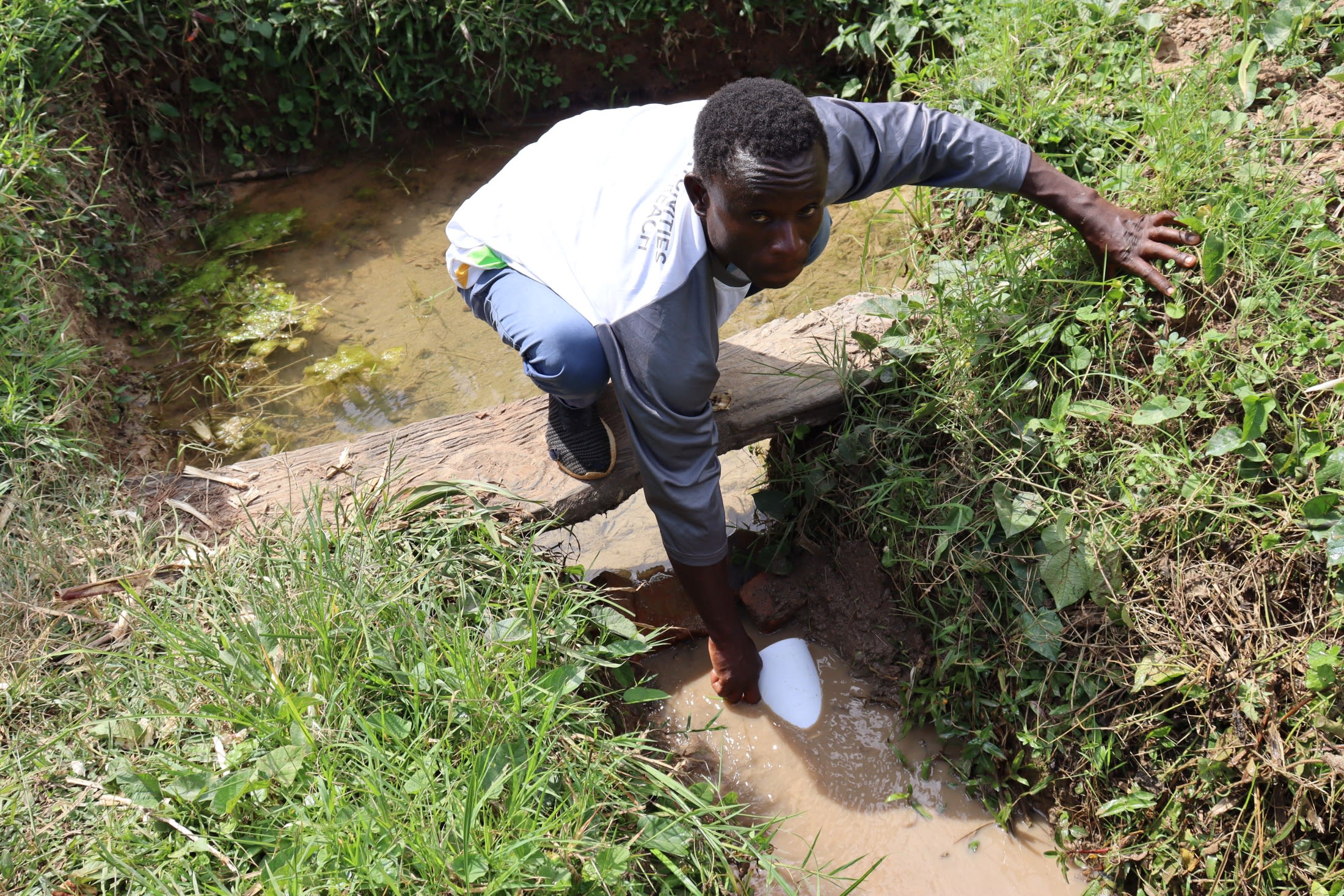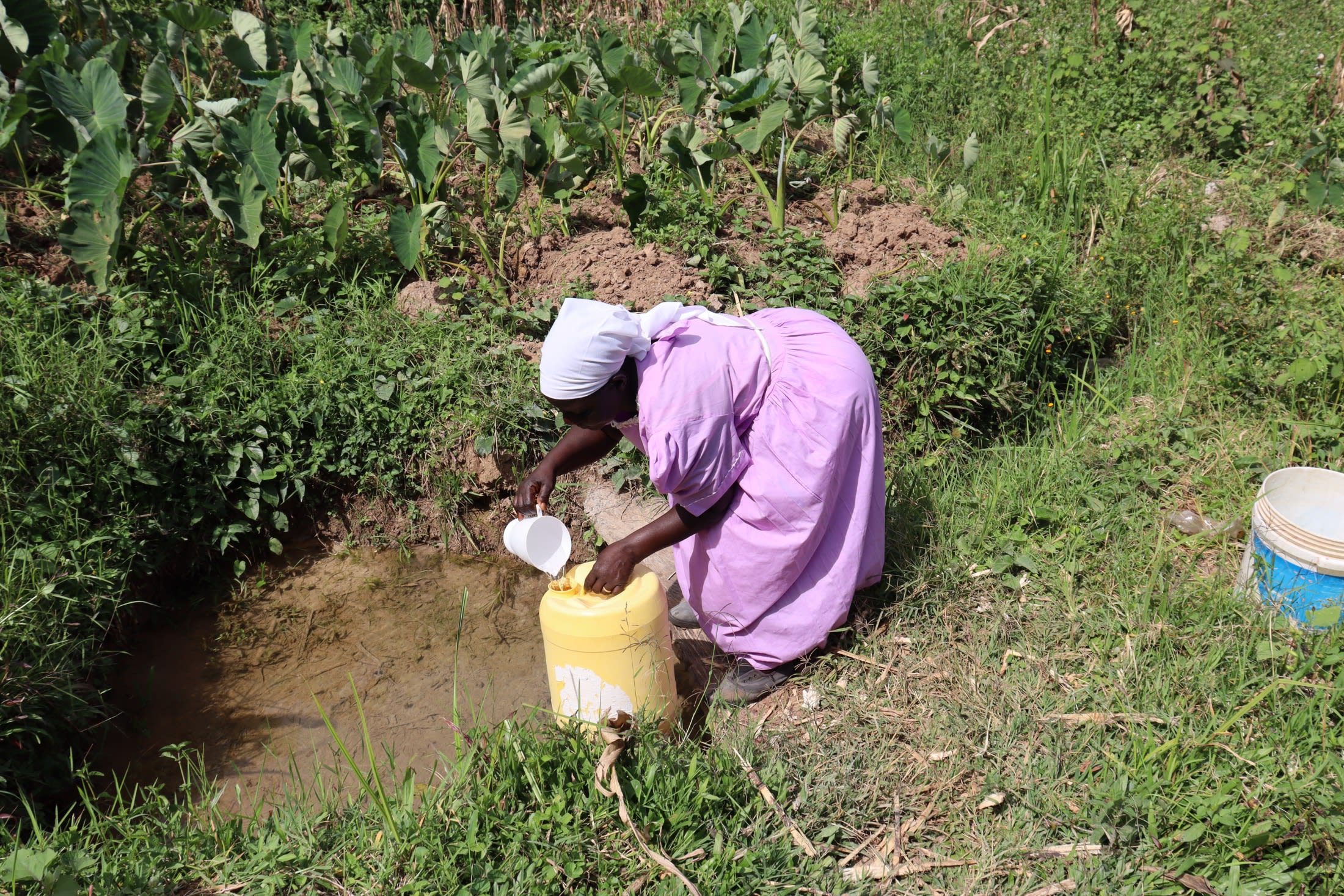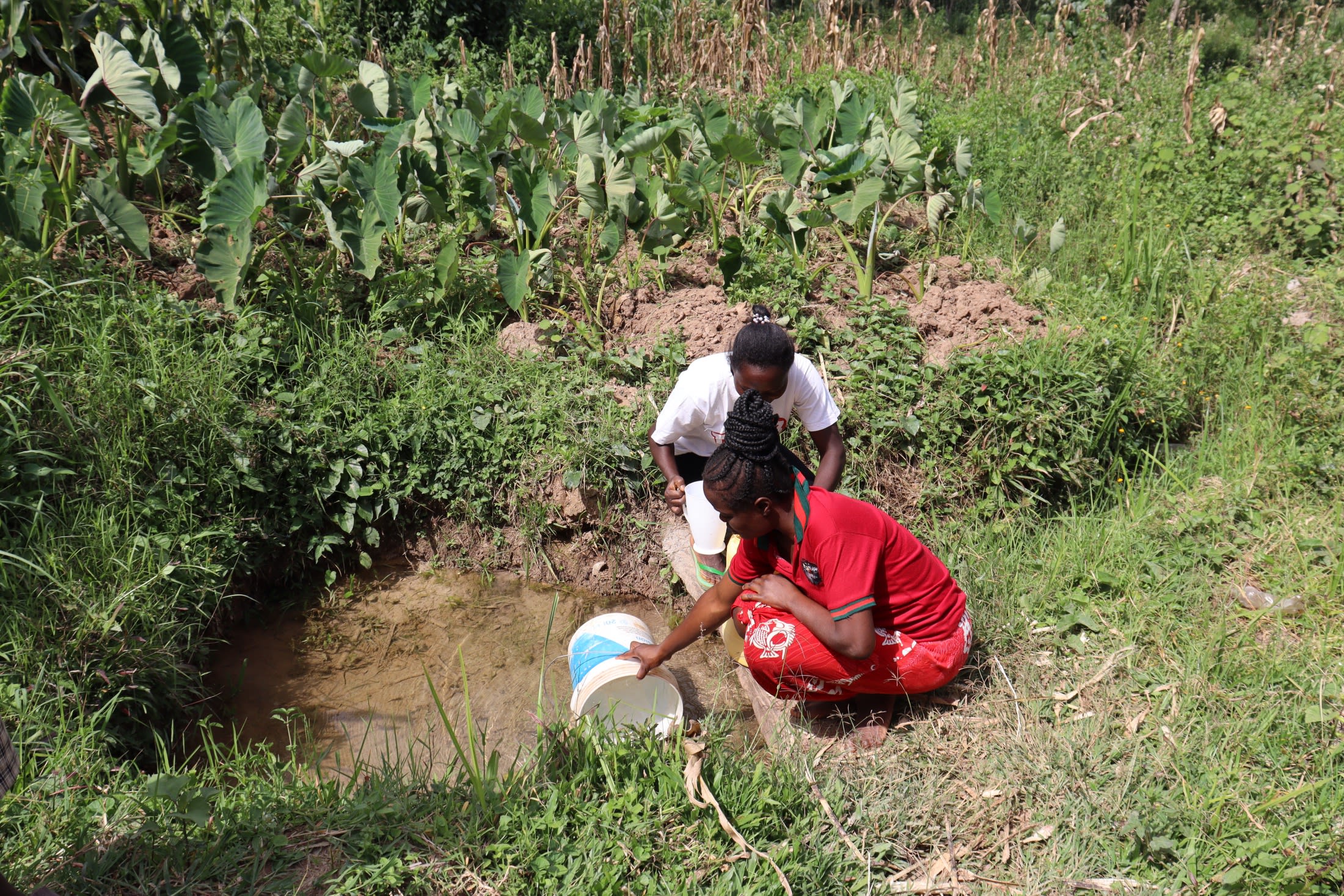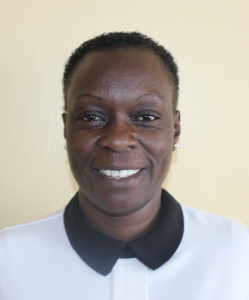There is plenty of water flowing from Henry Chisudia Spring, but the 140 community members of Shitirira who rely on it still suffer.

The spring is unprotected, and the water people drink is often the cause of waterborne illnesses like typhoid and diarrhea. Repetitive cases of such illnesses leave people in the community financially and physically drained. In some instances, it has cost people their lives.
"Some 842,000 people are estimated to die each year from diarrhea as a result of unsafe drinking water, sanitation and hand hygiene." - WHO
"If you walk to most of the homesteads in the community, there are more widows and orphans. Personally, my husband died some years back, leaving [me] with small children because of diarrhea," shared Truphena Chisudia, a 61-year-old farmer shown scooping water in the photo below.

Being ill also means people lose valuable time at work, and students miss valuable time in school. Both contribute to higher poverty rates in the community.
"We have suffered enough because of waterborne diseases. I have been sick from typhoid when I was in class five to six. This contributed greatly to my poor performance academically," said Miriam C., 16 (in the red shirt below).

The environment around the spring makes it difficult to safely and quickly access water. Community members crouch down and scoop water into their collection containers while trying their best not to stir up sediment from the bottom. Inevitably, the water becomes cloudy, and people are forced to wait even longer for it to settle. When it rains, the area is especially dangerous because the ground becomes muddy and slippery near the drawing point.
If community members can safely access uncontaminated, clean water, then perhaps, they can concentrate on the important tasks of providing income for their families and attending school. And hopefully, there will be an end to the needless suffering from water-related diseases.
What We Can Do:
Spring Protection
Protecting the spring will help provide access to cleaner and safer water and reduce the time people have to spend to fetch it. Construction will keep surface runoff and other contaminants out of the water. With the community’s high involvement in the process, there should be a good sense of responsibility and ownership for the new clean water source.
Fetching water is a task predominantly carried out by women and young girls. Protecting the spring and offering training and support will, therefore, help empower the female members of the community by freeing up more of their time and energy to engage and invest in income-generating activities and their education.
Training on Health, Hygiene and More
To hold trainings we work closely with both community leaders and the local government. We ask community leaders to invite a select yet representative group of people to attend training who will then act as ambassadors to the rest of the community to share what they learn.
The training will focus on improved hygiene, health, and sanitation habits in this community. With the community’s input, we will identify key leverage points where they can alter their practices at the personal, household, and community levels to affect change. This training will help to ensure participants have the knowledge they need about healthy practices and their importance to make the most of their water point as soon as water is flowing.
Our team of facilitators will use a variety of methods to train community members. Some of these methods include participatory hygiene and sanitation transformation, asset-based community development, group discussions, handouts, and demonstrations at the spring.
One of the most important issues we plan to cover is the handling, storage, and treatment of water. Having a clean water source will be extremely helpful, but it is useless if water gets contaminated by the time it is consumed. We and the community strongly believe that all of these components will work together to improve living standards here, which will help to unlock the potential for these community members to live better, healthier lives.
We will then conduct a small series of follow-up trainings before transitioning to our regularly scheduled support visits throughout the year.
Training will result in the formation of a water user committee, elected by their peers, that will oversee the operations and maintenance of the spring. The committee will enforce proper behavior around the spring and delegate tasks that will help preserve the site, such as building a fence and digging proper drainage channels. The fence will keep out destructive animals and unwanted waste, and the drainage will keep the area’s mosquito population at a minimum.

 Protected Spring
Protected Spring
 Rehabilitation Project
Rehabilitation Project




































